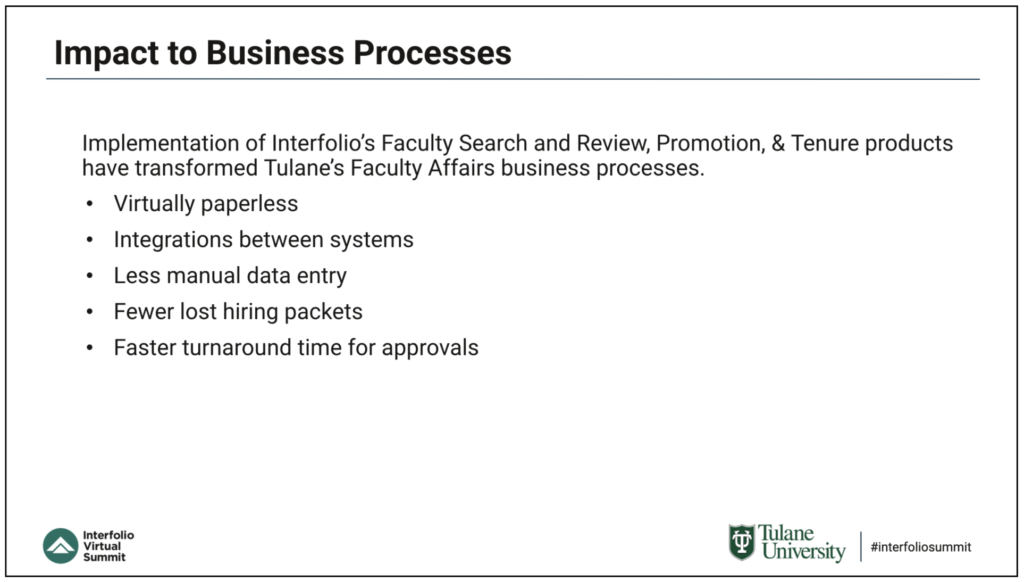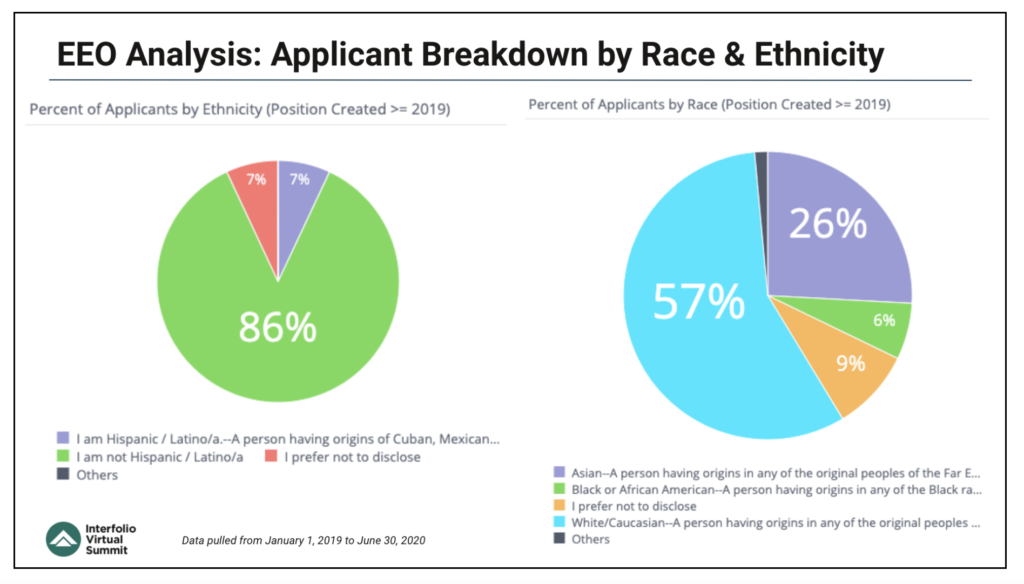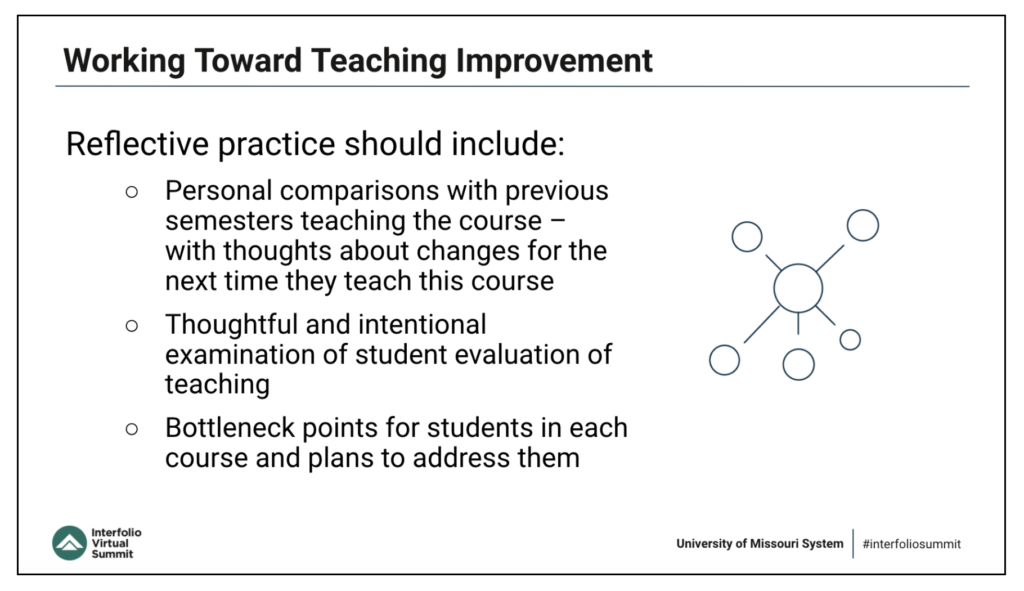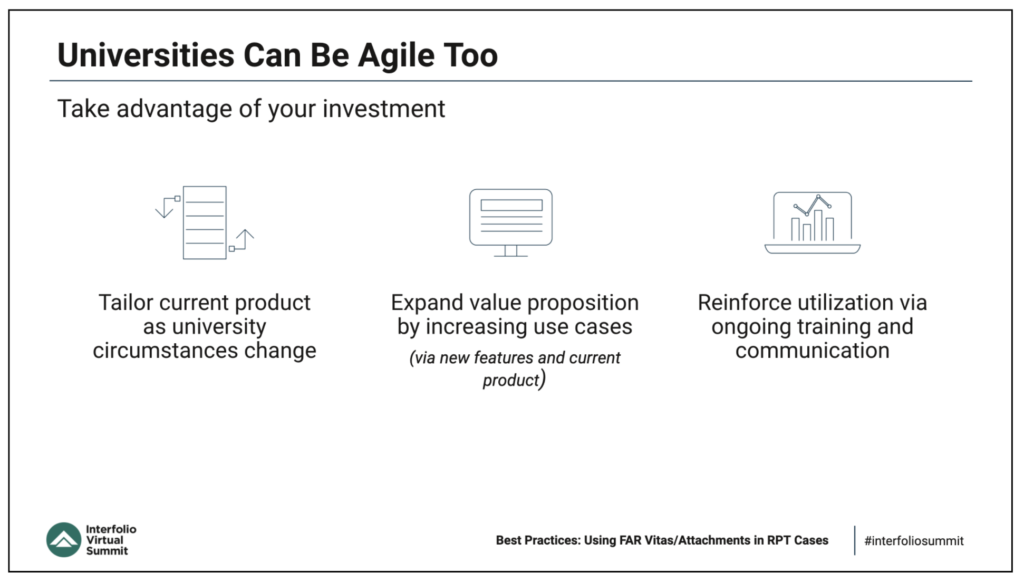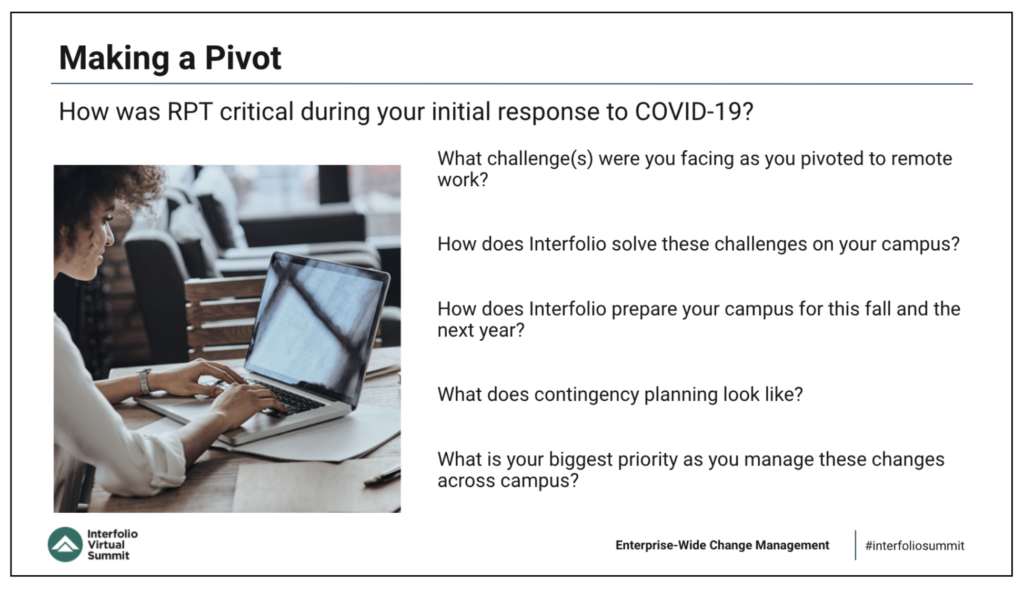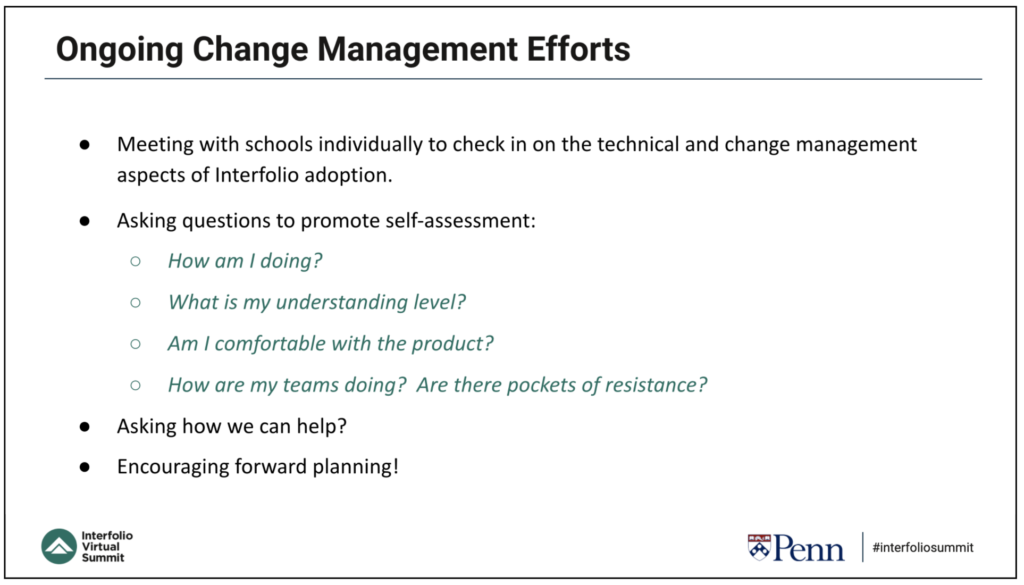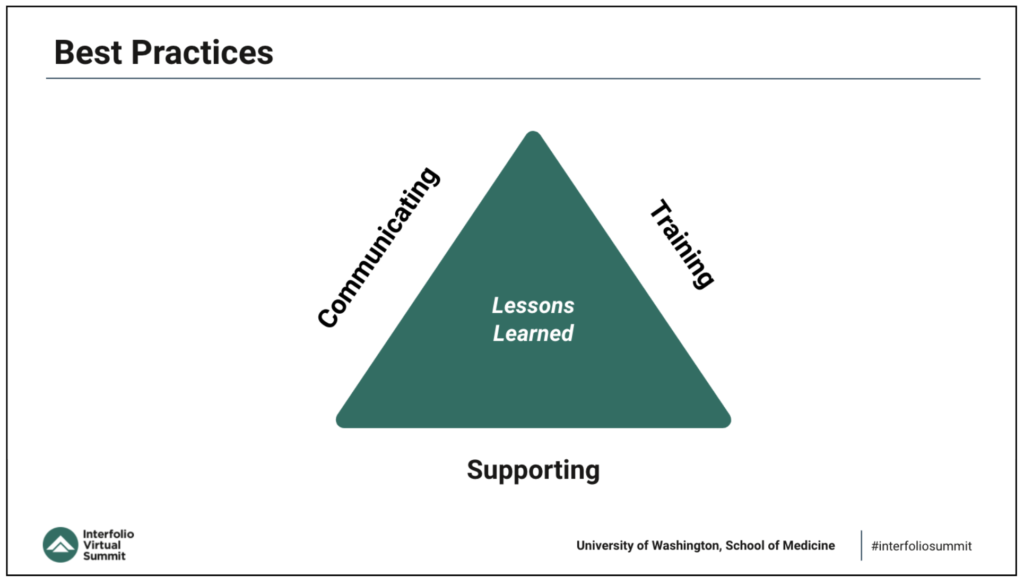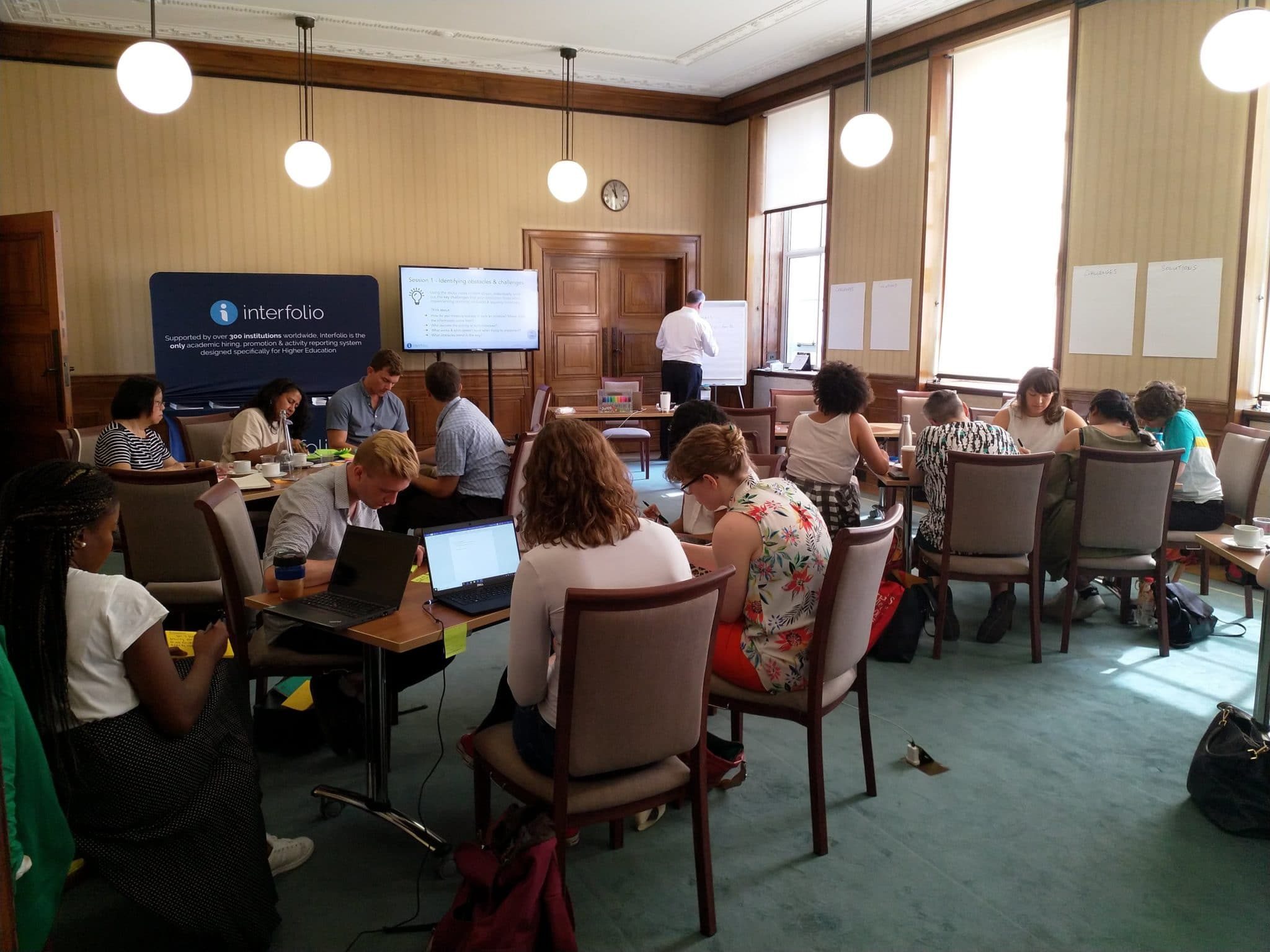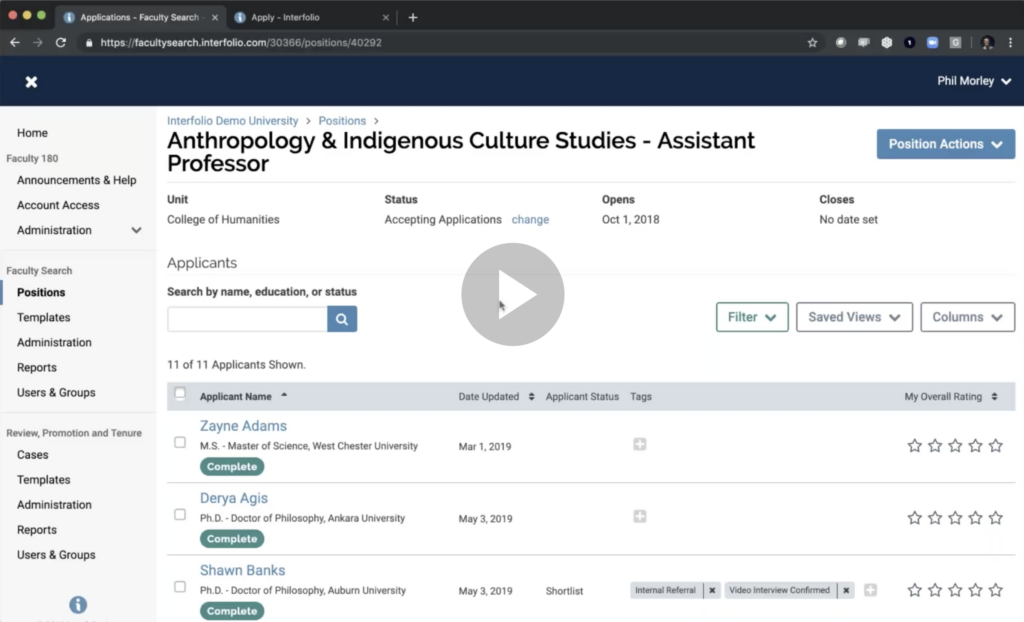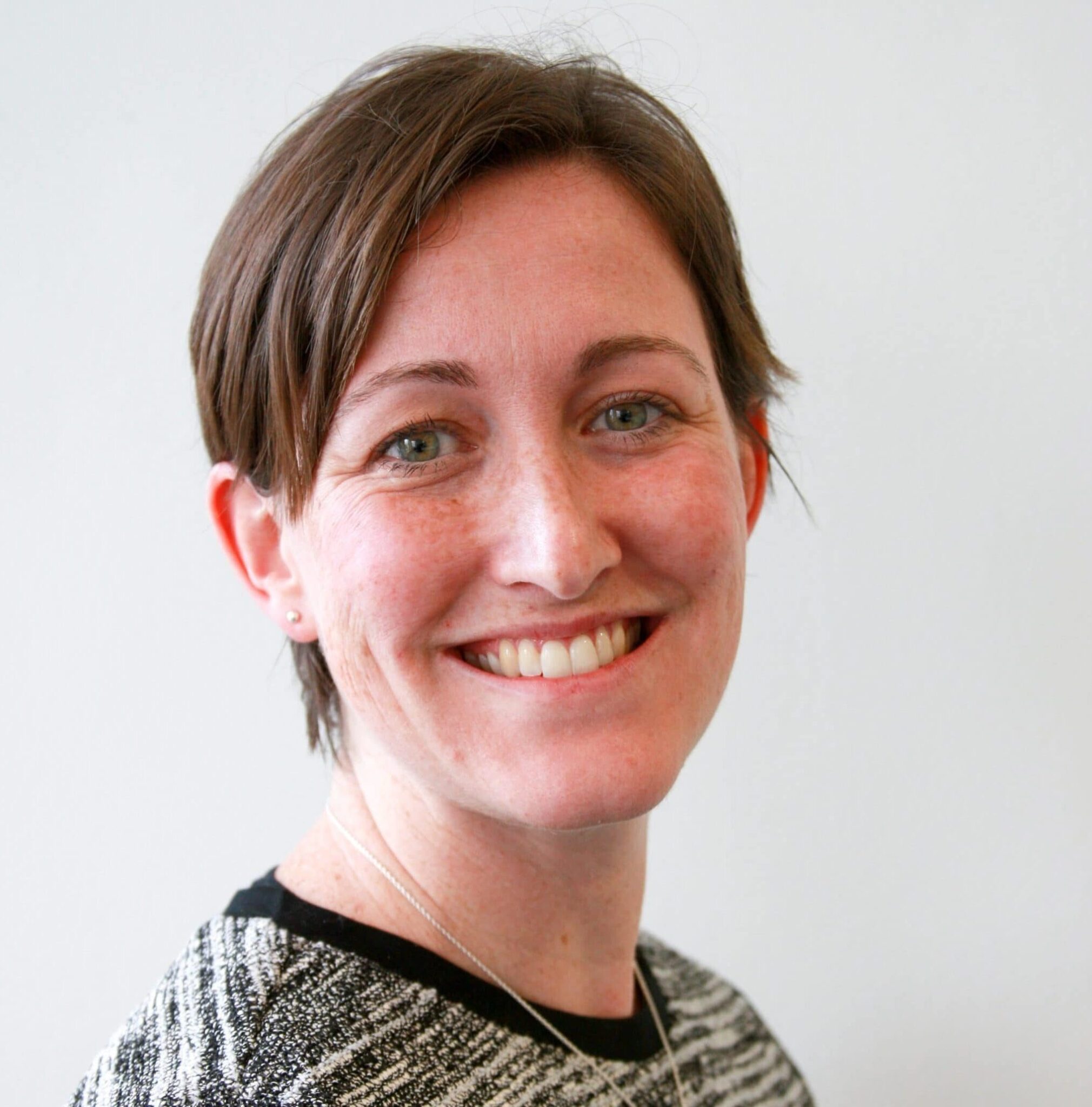Interfolio recently hosted a panel discussion on achieving faculty diversity— a timely and important discussion given the current climate of our nation. As many organizations are loudly proclaiming their intentions and commitments to working against systemic oppression for the betterment of our society, it raises questions on just how they plan to put these proclamations into actionable steps to be more inclusive in their industry. Higher education is no different. So, we wanted to start a dialogue with some institutional leaders to begin to understand not only the importance of diversity and inclusion, but how to begin to truly create and sustain such an environment.
Our panel consisted of:
Dr. Genyne Boston, Associate Provost at Florida A&M University
Dr. Christy Pichichero, Associate Professor and Director of Faculty Diversity in the College of Humanities and Social Sciences, George Mason University
Dr. Zulema Valdez, Associate Vice Provost for the Faculty and Professor of Sociology at University of California, Merced
To ground the discussion in data, we shared some high-level data points pulled from our Faculty Search module, looking across all positions Interfolio hosted from 2019 to date. Overall, we found that only about 2% of our institutional partners require diversity statements to be submitted with faculty applications. Most institutions are instead prioritizing confidential letters of recommendation, even above teaching and research statements. However, we did discover that in terms of EEO statements which appear in the job postings, over 60% of our partners personalize their statements rather than utilizing the standard government-mandated statement. Read more about how Interfolio’s platform supports diversity.
We then moved into a structured question-and-answer discussion with our panelists.
Thinking about your time working professionally in higher education, have you seen progress or improvement when it comes to building a diverse and inclusive faculty body? Is the Institution a more inclusive place for professors than it used to be?
Dr. Boston expressed that during her tenure, the needle for inclusivity has jumped more for gender diversity, with more women climbing the ranks of academia in recent years. The panelists agreed that while there has been some progress, certainly there is more work to be done in regard to persons with diverse backgrounds and ethnicities. Dr. Pichichero expanded on that point, adding that “although we have seen progress, it depends on what metrics you are using to measure.” When taking into account promotion rates, tenured positions, contingent positions, and factors such as invisible labor, we find that we are still on the steep end of change. Dr. Pichichero cited the necessity to focus on faculty recruitment as a way to measure and push progress and to develop strategic practices to support and retain faculty of color. She highlighted the issue of pipeline and the educational system, as “systemic anti-black and anti-indigenous racism, as well as intersectional racism with gender, social class, and sexuality, create profoundly different challenges and trajectories for people in our country.”
Dr. Valdez shared that the “women in STEM” effort at UC Merced has led to their math department being 50% women—a shocking number considering the numbers from most institutions. Dr. Valdez reiterated that progress overall has been incremental and agrees there is still a lot of work needing to be done. She discussed the need for strong commitment from faculty to push diversity initiatives forward and the need for progress to begin with diverse search committees. “I do think you have to put it on the faculty a little bit. I think that’s where it belongs, and I think that’s where change can really happen,” stated Dr. Valdez.
What role do faculty information management and transparency around data play in the effort to improve diverse representation and create an inclusive work environment for faculty members?
What are some particularly significant kinds of faculty data to focus on today?
Dr. Pichichero shared that “data is a linchpin to fostering institutional change, because used correctly and transparently, it creates accountability,” noting that using data to identify which groups are actually underrepresented can help search committees prior to starting their search. From there, data around hiring, retention, promotion, and tenure can create a full and complete picture to ensure diversity initiatives are being met with sufficient action. Dr. Pichichero also mentioned that diverse student bodies are not being mirrored in the faculty, which is an issue as well. Data allows us to focus faculty recruitment efforts to better represent the demographics of the student body.
Building on this commentary Dr. Valdez noted that additional data must be considered around the climate at institutions. Are faculty feeling valued at their institution? Institutions can get a sense of inclusivity by using data from exit interviews, analyzing who is choosing to leave, and carefully listening to what they say about why they are leaving. Dr. Valdez also called for more attention on the issue of pay gaps, citing that there is “inequality baked into the income scale” that most are unaware of. “We need to feel valued” was a powerful statement from Dr. Valdez wherein she discussed faculty not feeling supported. It naturally follows that they will begin to consider what their incentive is to stay with an institution.
To round out this part of the discussion, Dr. Boston stressed the importance of analyzing the data around who is transitioning into leadership roles. When thinking about faculty impressions of disparity between promotions and time of hire, look at the leaders of those departments. Those in leadership are the decision makers. “There needs to be a certain level of diversity and inclusion in the area of leadership, because that will inform, to some extent, what a search committee will look like and what will happen with an endowed chair,” cited Dr. Boston.
Thinking beyond data collection/reporting, are there other ways that you’ve seen modern technology (whether Interfolio or other technologies you use) better enabling higher education leaders to build a more inclusive and more diversely represented academic workforce?
Dr. Valdez shared that COVID-19 has allowed her staff to see the impact of technology and how it can help them conduct searches. And, because of this, she recommends getting creative when it comes to fostering inclusivity with respect to technology. Dr. Valdez highlighted that technology presents an opportunity to deepen applicant pools as it is inexpensive to conduct additional interviews and bring in more candidates, since all are virtual. Using technology can be a means to build community, helping to make faculty feel connected. Realizing that new faculty can at times feel isolated, her institution has implemented virtual coffee check-ins as a means to combat this. Dr. Boston agreed, mentioning that zoom enables search committees to interface with candidates in a more cost-effective and timely manner. To build community, she mentioned that her institution has pivoted to utilize their LMS as a way for faculty, including recipients of the National Science Foundation (NSF) ADVANCE grants, to share their research and foster connections, especially as scholars prepare for review and promotion. Dr. Pichichero added that institutions must consider how to support the online research activities related to their individual disciplines that may not be directly tied to their university. As leaders continue to think through ways to engage online via different technologies, they take into account how to best support faculty.
Though innovation is a key point in Higher ed, Higher ed seems slow to change in many ways which also affects diversity. How do you approach this challenge?
“There’s no easy fix… the culture of universities, as they’ve been constructed as donor-based and on capitalist models, creates a lot of rigidities,” stated Dr. Pichichero. However, there is now an opportunity to speak more frankly than before. Dr. Pichichero says implicit bias training is passé, as peoples’ implicit biases are explicit. These biases are all impacting how people are weeded out of search processes and promotions. She concludes that “it’s time to listen to people more, to use the words that we know and that we have, and to build coalitions across administration and faculty….” Dr. Boston added that there are opportunities now to have more informal dialogues where individuals won’t be so guarded around issues of diversity and inclusion, which will allow for more authentic conversations. She believes there should be more intentional training around best practices based on institution type. Dr. Valdez shared that faculty don’t realize how much power they have to communicate to administrators and to start these conversations. It is important to keep in mind that undergraduates and the communities served by these institutions also value this work. Administrators and tenured-faculty, in some cases, represent junior or early career faculty, and they want and need these changes. She concluded, “we have the opportunity to leverage this power and force a change,” and at UC Merced, they are actively having these conversations.


